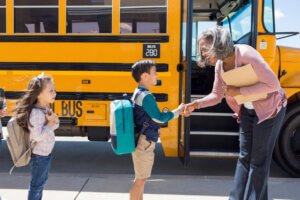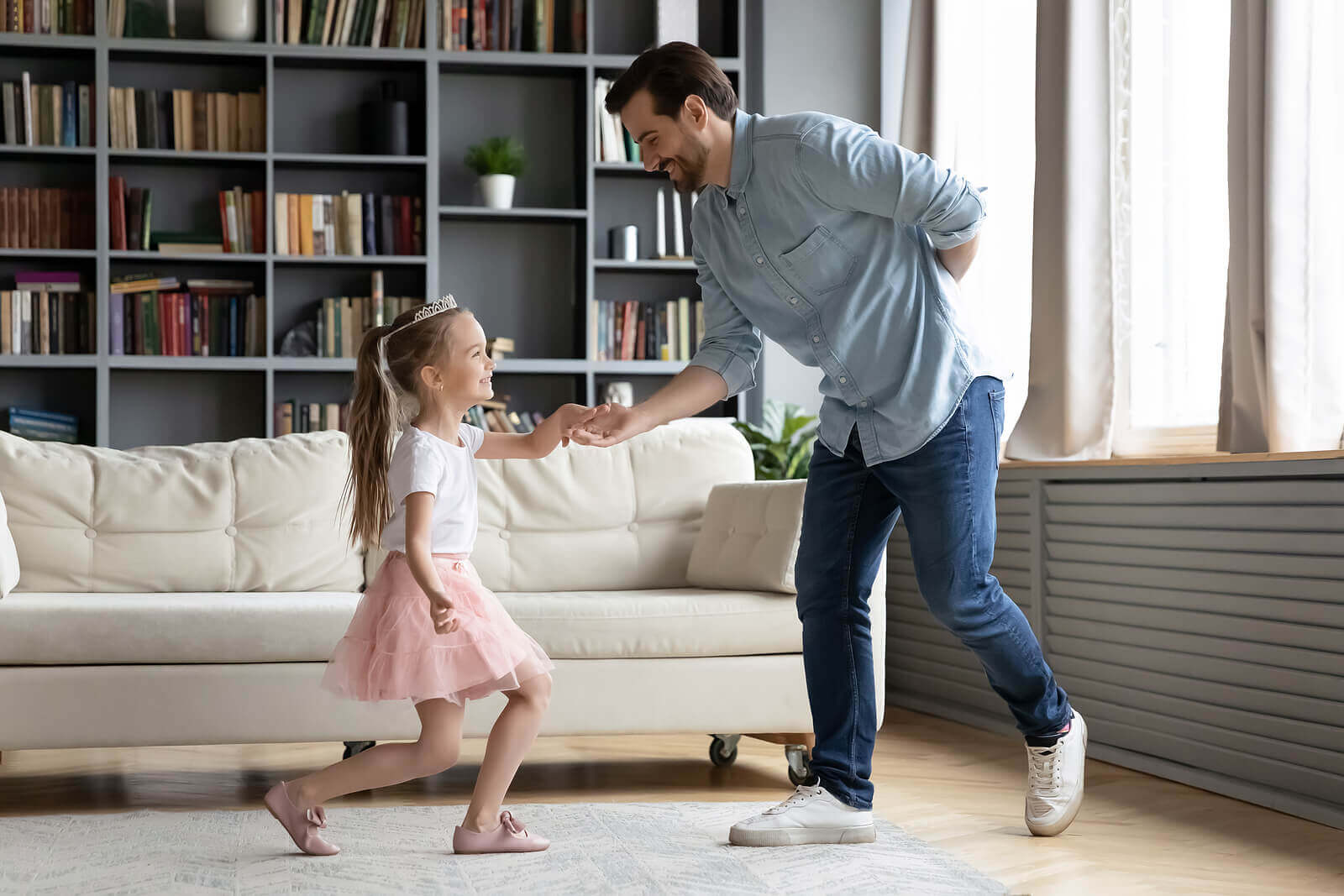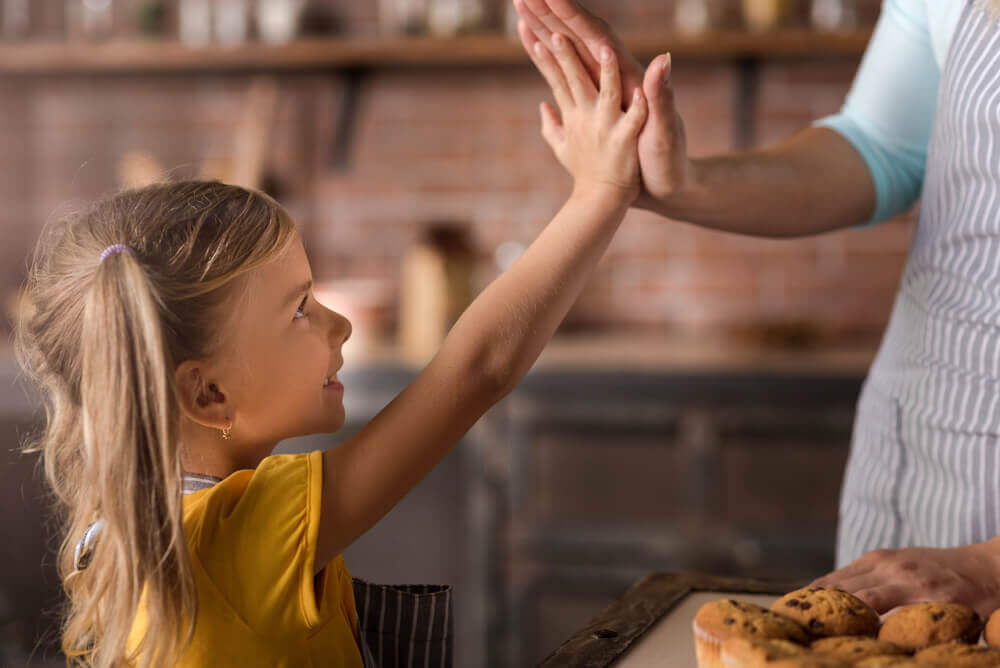How to Teach Politeness to Children?

Social skills are essential for a healthy coexistence. That’s why it’s so important to teach politeness to children. In fact, it’s one of the best ways to start developing them.
Kindness, good manners, and courtesy are essential so that your little one can have appropriate behaviors in all the places they go. Likewise, when you share activities with other people, whether they’re the same age or not.
Whether in a business, on a walk in the park, or when using public transport, applying the rules of courtesy allows you to initiate an appropriate social interaction without difficulties.
What is courtesy?
When people are born, they’re like blank sheets of paper on which the different learning, skills, and knowledge are written. One of the things that are learned is the rules of courtesy, and this happens first at home, with the family, and later, they’re strengthened at school.
According to the Royal Spanish Academy, courtesy is defined as follows:
“Demonstration or act that shows attention, respect, or affection that someone has for another person.”
This concept makes it clear that it’s a social skill, and as such, it can vary in different family settings, cultural groups, and countries. However, it’s always necessary to ensure good coexistence.

How to teach politeness to children?
The rules of courtesy include a series of expressions and words that you yourself say to your child from birth. For example, “good morning” or “good night”. Something as simple as a warm greeting can make a big difference in the future.
But it’s not just about saying hello. There are different situations of interaction with others for which we must know how to act appropriately. Therefore, it’s good that parents know how to teach the rules of courtesy so that children can gradually get used to them and use them when the time comes.
Your example is the best teacher
As parents, the best way to teach politeness to children is to practice these rules ourselves. Through observation, the child can copy and then learn how to apply these rules. You’re the example from which your child learns every day!
Early learning
Before walking, babies learn to wave, and this is a basic form of courtesy. Take the opportunity to congratulate them when they begin to make this gesture!
Another simple teaching methodology is through play. For example, when the child gives you a toy, you reply “thank you!” And then, you switch roles so that they thank you and imitate your previous gesture.
Magic words
Once children begin to speak, it’s important to teach them to greet others when arriving or leaving a place. Explain why you do it and also, the importance of adopting certain expressions such as “thank you very much”, “I beg your pardon”, or “please” .
Good manners
Good manners are part of the rules of courtesy and putting them into practice improves family and social coexistence. Therefore, it’s important that from a young age you teach your children the following habits:
- Don’t yell at siblings or schoolmates.
- Don’t interrupt conversations and know how to wait your turn to speak.
- Greet the neighbors.
- Ask permission.
- Cover your mouth when coughing or sneezing.
- Don’t use bad language.
Patience, understanding, and appreciation
As with all learning, internalizing the rules of politeness takes time. Therefore, you have to be patient and understanding with children.
Surely you have to repeat to them many times that they have to say hello when they arrive somewhere, but after a while, they’ll know how to do it on their own. When this happens, give them a compliment so they feel your support and know that they’re doing a great job. It’s even a good idea to set up a reward system.
Finally, if you have to correct them, do it in private. Also, always explain to your children what the advantages of having good manners and being courteous are.

A tool for the future of your children
“Education and courtesy open all doors”. -Thomas Carlyle-
As a mom or dad, you want the best for your children and you should know that when you teach them to use the rules of courtesy, you’re on the right track. These social skills complement education related to knowledge and contribute to the integral formation of people.
Consider politeness a great tool for your children’s future, as the road to success begins with the small details: A friendly hello, a sincere thank you, or a timely apology.
Social skills are essential for a healthy coexistence. That’s why it’s so important to teach politeness to children. In fact, it’s one of the best ways to start developing them.
Kindness, good manners, and courtesy are essential so that your little one can have appropriate behaviors in all the places they go. Likewise, when you share activities with other people, whether they’re the same age or not.
Whether in a business, on a walk in the park, or when using public transport, applying the rules of courtesy allows you to initiate an appropriate social interaction without difficulties.
What is courtesy?
When people are born, they’re like blank sheets of paper on which the different learning, skills, and knowledge are written. One of the things that are learned is the rules of courtesy, and this happens first at home, with the family, and later, they’re strengthened at school.
According to the Royal Spanish Academy, courtesy is defined as follows:
“Demonstration or act that shows attention, respect, or affection that someone has for another person.”
This concept makes it clear that it’s a social skill, and as such, it can vary in different family settings, cultural groups, and countries. However, it’s always necessary to ensure good coexistence.

How to teach politeness to children?
The rules of courtesy include a series of expressions and words that you yourself say to your child from birth. For example, “good morning” or “good night”. Something as simple as a warm greeting can make a big difference in the future.
But it’s not just about saying hello. There are different situations of interaction with others for which we must know how to act appropriately. Therefore, it’s good that parents know how to teach the rules of courtesy so that children can gradually get used to them and use them when the time comes.
Your example is the best teacher
As parents, the best way to teach politeness to children is to practice these rules ourselves. Through observation, the child can copy and then learn how to apply these rules. You’re the example from which your child learns every day!
Early learning
Before walking, babies learn to wave, and this is a basic form of courtesy. Take the opportunity to congratulate them when they begin to make this gesture!
Another simple teaching methodology is through play. For example, when the child gives you a toy, you reply “thank you!” And then, you switch roles so that they thank you and imitate your previous gesture.
Magic words
Once children begin to speak, it’s important to teach them to greet others when arriving or leaving a place. Explain why you do it and also, the importance of adopting certain expressions such as “thank you very much”, “I beg your pardon”, or “please” .
Good manners
Good manners are part of the rules of courtesy and putting them into practice improves family and social coexistence. Therefore, it’s important that from a young age you teach your children the following habits:
- Don’t yell at siblings or schoolmates.
- Don’t interrupt conversations and know how to wait your turn to speak.
- Greet the neighbors.
- Ask permission.
- Cover your mouth when coughing or sneezing.
- Don’t use bad language.
Patience, understanding, and appreciation
As with all learning, internalizing the rules of politeness takes time. Therefore, you have to be patient and understanding with children.
Surely you have to repeat to them many times that they have to say hello when they arrive somewhere, but after a while, they’ll know how to do it on their own. When this happens, give them a compliment so they feel your support and know that they’re doing a great job. It’s even a good idea to set up a reward system.
Finally, if you have to correct them, do it in private. Also, always explain to your children what the advantages of having good manners and being courteous are.

A tool for the future of your children
“Education and courtesy open all doors”. -Thomas Carlyle-
As a mom or dad, you want the best for your children and you should know that when you teach them to use the rules of courtesy, you’re on the right track. These social skills complement education related to knowledge and contribute to the integral formation of people.
Consider politeness a great tool for your children’s future, as the road to success begins with the small details: A friendly hello, a sincere thank you, or a timely apology.
All cited sources were thoroughly reviewed by our team to ensure their quality, reliability, currency, and validity. The bibliography of this article was considered reliable and of academic or scientific accuracy.
- EDUCREA [Internet] [Chile] (s.f.) Como enseñar normas de cortesía a los niños. Disponible en: https://educrea.cl/como-ensenar-normas-de-cortesia-a-los-ninos/
- Flores Montañes, N., Ramos Prado I. (2013) Enseñando habilidades sociales en el aula. Puentes para crecer. Universidad Autónoma de México. Disponible en: http://www.psicologia.unam.mx/documentos/pdf/publicaciones/Ensenando_habilidades_sociales_en_el_aula_Flores_Monanez_y_Ramos_Prado.pdf
- Tourville Amanda, D. (2012) Allá donde vamos, nos comportamos: ¡Aprender buenos modales es divertido! Editorial: Everest
- Euroinnova Bussines School. [Internet] (s.f.) Normas de cortesía para niños de primaria. Disponible en: https://www.euroinnova.edu.es/blog/normas-de-cortesia-para-ninos
This text is provided for informational purposes only and does not replace consultation with a professional. If in doubt, consult your specialist.








